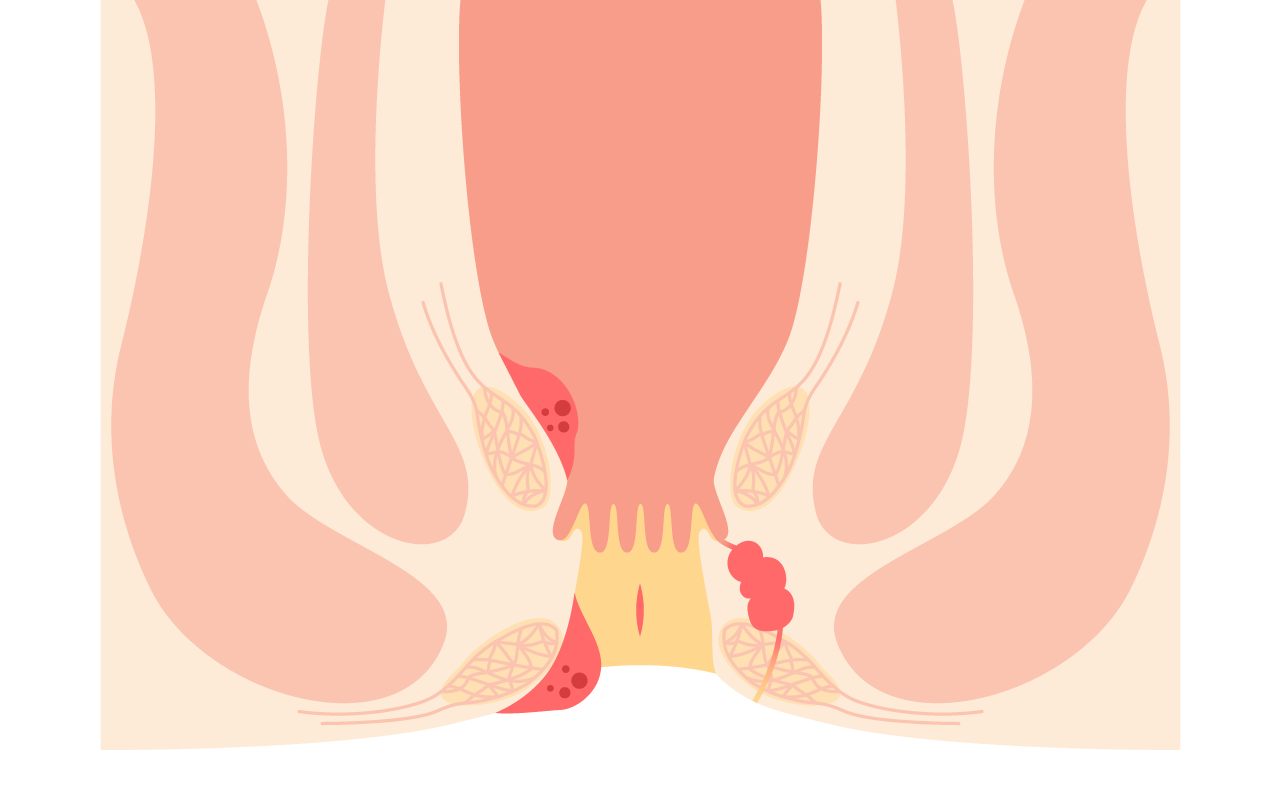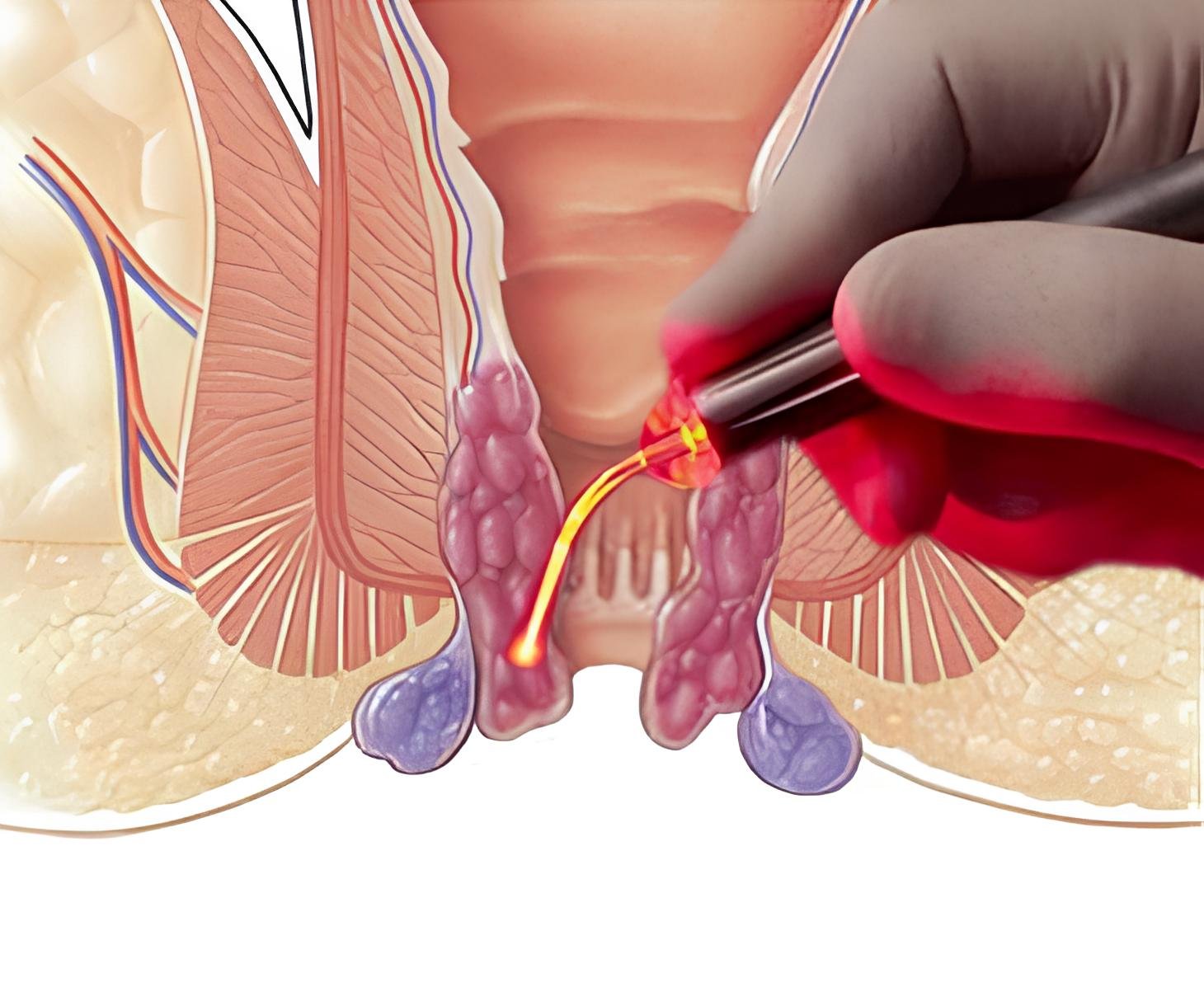Piles
Piles, also known as hemorrhoids, are swollen veins located around the rectum or in the anus. While they can be uncomfortable and sometimes painful, piles are a common condition and often not a cause for serious concern. However, they can significantly impact one's quality of life if left untreated. Understanding the symptoms, treatment options, and preventive measures is crucial for managing this condition effectively.

Symptoms :
Piles can manifest with various symptoms, which may include:
- Rectal Bleeding: One of the most common symptoms of piles is bleeding during bowel movements. This bleeding may be noticed on toilet paper or in the toilet bowl.
- Pain or Discomfort: Piles can cause pain or discomfort, especially during bowel movements or when sitting for extended periods.
- Itching and Irritation: The swollen veins associated with piles can lead to itching and irritation around the anus.
- Swelling or Lumps: External piles may appear as swollen lumps around the anus, which can be sensitive to touch.
- Mucus Discharge: Some individuals with piles may experience a discharge of mucus from the anus.
Treatment
Treatment for piles depends on the severity of the condition and the individual's symptoms. Here are some common treatment options:
- Lifestyle Modifications : Making changes to your diet and lifestyle can help alleviate symptoms and prevent piles from worsening. This may include consuming a high-fiber diet, staying hydrated, and avoiding straining during bowel movements.
- Topical Treatments : Over-the-counter creams, ointments, or suppositories containing hydrocortisone or witch hazel can help relieve itching, pain, and inflammation associated with piles.
- Sitz Baths: Soaking the anal area in warm water for 10 to 15 minutes several times a day can provide relief from discomfort and promote healing.
- Medications : In some cases, your healthcare provider may prescribe medications such as stool softeners or pain relievers to manage symptoms.
- Minimally Invasive Procedures : If conservative measures fail to provide relief, minimally invasive procedures such as rubber band ligation, sclerotherapy, or infrared coagulation may be recommended to shrink or remove the piles.
- Surgical Intervention: In severe cases or when other treatments have been unsuccessful, surgical procedures such as hemorrhoidectomy may be necessary to remove the piles.
Operative Treatment

MIPH Stapler Surgery
MIPH Stapler Surgery, also known as stapled hemorrhoidopexy, is a minimally invasive surgical technique designed to treat symptomatic hemorrhoids. This procedure involves using a specialized circular stapler device that repositions the hemorrhoidal tissue and reduces blood flow to the hemorrhoids, leading to their shrinkage and resolution.
-
Advantages of MIPH Stapler Surgery :
- Less Painful
- Quicker Recovery
- Shorter Hospital Stay
- Minimal Postoperative Care
- Lower Risk of Complications
Laser Surgery
Piles, also known as hemorrhoids, are swollen veins in the lower part of the anus and rectum. These veins can become inflamed and cause discomfort, pain, and bleeding during bowel movements.
Laser surgery for piles is an effective and minimally invasive option for treating hemorrhoids. With its advantages of minimal pain, quick recovery, and precision, it offers a favorable alternative to traditional hemorrhoidectomy. However, as with any medical procedure, it’s essential to consult with a healthcare professional to determine the best treatment approach for your condition.
-
Advantages of Laser Surgery :
- Minimal Pain
- Quick Recovery
- Less Bleeding
- Precision
- Lower Risk of Infection

